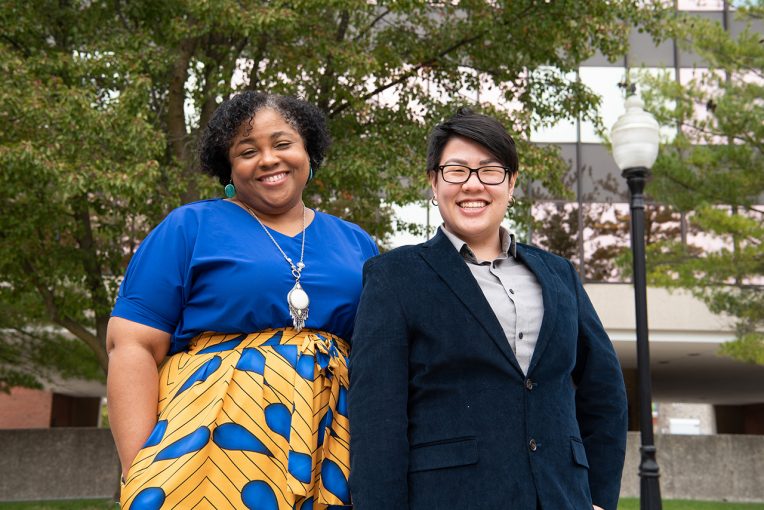The new EDI ISU wordmark is now available to all of campus. The wordmark—or a logo created mainly from text—was developed as a way to show unity throughout campus for equity, diversity, and inclusion (EDI) efforts. Those interested in downloading the wordmark can contact University Marketing and Communications.
“This new wordmark is more than a simple logo. It represents our joint commitment as a campus. Equity work is not the role of the few, but the responsibility of the many,” said Interim Assistant to the President for Diversity and Inclusion Dr. Doris Houston. “It was created with the essence of intentionality, infusing a lens of inclusivity at the inception of projects.”
The wordmark is the brainchild of Dr. Dakesa Piña and graphic designer Lawrence Lair. And it started with a question.
“I wanted to know what the words ‘diversity,’ ‘equity,’ and ‘inclusion’ meant to people,” said Piña, who sent a survey to all alumni, students, faculty, and staff in the College of Education, where she became the first college-level EDI officer in January of 2021. “The feedback was tremendous, with an ongoing hope for the entire University’s dedication to being a truly welcoming, inclusive, diverse, and equitable place.” From the results, Piña pulled the phrase that encapsulates a collective effort toward equity, EDI ISU (EDI is you).
Piña turned to University Marketing and Communications to craft the verbiage into a wordmark she could use in College of Education communications and efforts. There she met Lair, who arrived at the University in the spring of 2021 with a passion for EDI work. “This was my first project from the ground up for Illinois State, and I saw it as a melding of my art and volunteer work with philanthropic, humanitarian, and social and environmental justice issues,” they said. “I wanted to tap into all of that in the design and create something that embodied the statement—EDI is you.”
While exploring fonts, Lair delved into the development of typefaces. They discovered Freight Sans and Freight Text, designed by Joshua Darden, the first-known African American credited as a type designer, according to Fonts in Use. “I could have chosen a font that just looked pretty, but I wanted something that would embody the entire statement,” said Lair. “It’s about deliberately looking. As I was reading Darden’s biography and articles on his work, it felt like these typefaces captured what we are trying to express.” Lair also researched signs and symbols of justice movements for the bolder elements of the wordmark. “There is a design term called Zeitgeist, which translates to spirit of the times,” said Lair. “Those movements, that challenge and call for change seems to speak to the spirit of the times.”
EDI work is not something you can do haphazardly or tack on at the end of a project. It needs to be infused in every step, on every level.
Dr. Dakesa Piña
When Piña and Lair presented the finished wordmark to Houston, she was so impressed that she requested it be made available to the campus. Piña and Lair presented the wordmark to the President’s Diversity and Inclusion Advisory Council (DIAC), which drafted a letter of recommendation for a University-wide adoption of the wordmark.
Lair said they designed the wordmark to be flexible and adapt to change. “Living as somebody who is typically marginalized and misrepresented is to know what it means to live in change,” said Lair, who is a non-binary, transmasculine, first-generation Asian American. “We know what it means to have your identity defined by others. Inevitably marginalized people will change to move beyond those boundaries, to live beyond constraints.”
Piña noted that Lair’s approach to the design of the wordmark is emblematic of inclusive equity work. “EDI work is not something you can do haphazardly or tack on at the end of a project. It needs to be infused in every step, on every level,” said Piña. “This is the type of intentionality we should have in all things that we do in higher education. If we do, we will create a premier institution for culture and climate. Attracting students, faculty, and staff that are innovative, talented, and prestigious” she said.



